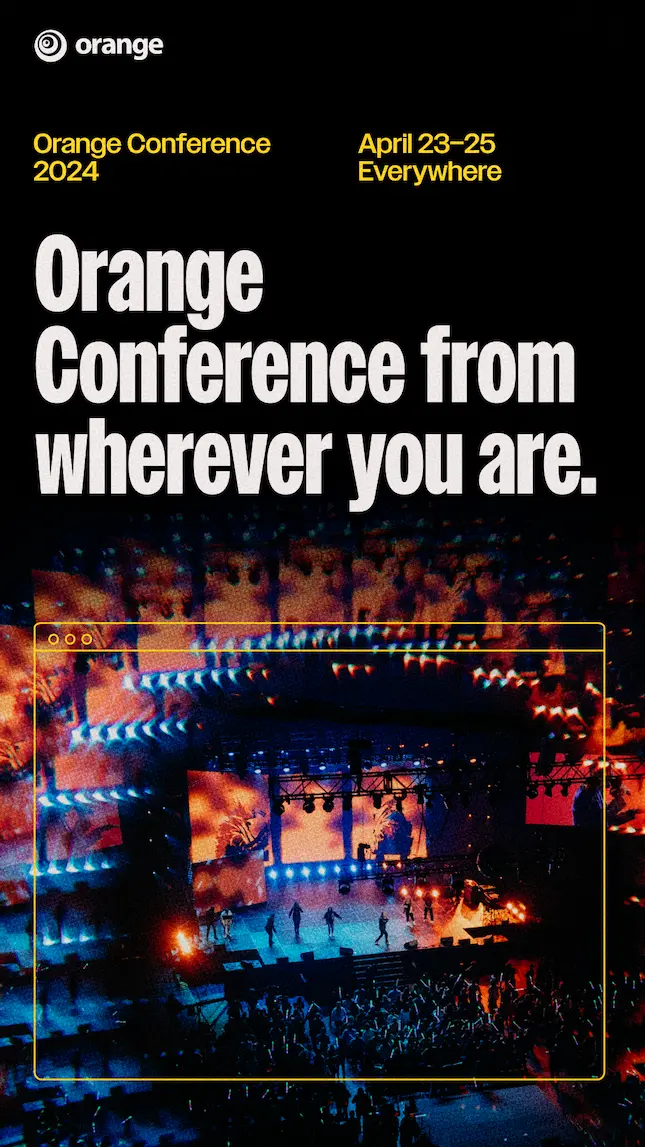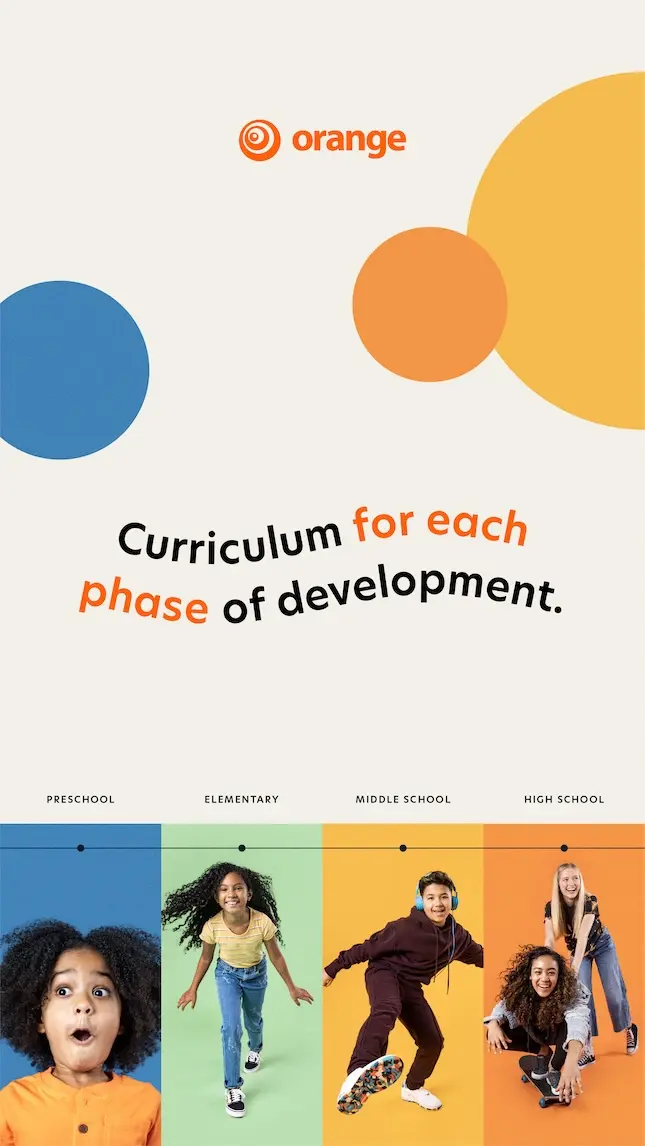What if you had a roadmap for the next year of ministry? You could . . .
- Plan further in advance
- Plan what you teach with a strategy in mind
- Stop wondering what you’ll teach next week
With XP3 curriculum, you get a plan for the next three years of ministry, and detailed insight on each coming year of ministry. We help you plan ahead through our 3-Year Plan called a Scope & Cycle (released every three years) and a 1-Year Plan called a One-Year Scope (released every year).
What’s a Scope & Cycle?
We use the words Scope & Cycle to describe the roadmap we have for our curriculum.
Our scope is the comprehensive plan that prioritizes what you teach and when. It basically tells you what we’re teaching now with our curriculum and what we’re planning to teach in the future. It’s the big-picture curriculum plan for XP3.
Our cycle is the plan to recycle or revisit what you teach. It’s how we circle back to reinforce the topics we’ve covered to make sure what we’re teaching sticks effectively. It’s the way we think about what’s ahead for XP3.
The cycle is really important because you can’t make kids show up more consistently. You can’t guarantee that they’ll be with you each and every week. And you also can’t make more hours in the week for yourself. You can’t build in more time to reinforce what you’re teaching to each and every student who may or may not be with you. But you can make the time you have matter more by recycling and reinforcing the things that matter most during the middle and high school phase. That’s exactly what your Cycle does!
So if your scope prioritizes what you will teach and your cycle strategically reinforces those principles again and again in new ways, then developing a Scope & Cycle is a balancing act of both strategy and structure and flexibility and freedom. And because we believe that both are so vital to the content in your student ministry, we want to give you a little glimpse into exactly how we came up with our Scope & Cycle, why we do it the way we do it, and what we’re planning to cover in our curriculum Scope & Cycle.
2023-2024 Scope & Cycle Resources
Every year, we release a focused look at the upcoming year of XP3 High School, and XP3 Middle School curriculum. This year, we’re also including concept art for each series in the 1-Year scope. The graphics you see aren’t the series graphics you’ll receive in your curriculum download. These concepts just help give you a taste of each topic we’re coving. You can read more about the changes to this year’s scope and cycle here.
In download below, you’ll also find the updated 3-Year Scope & Cycle. This 3-Year Scope & Cycle gives you the master plan, while the 1-Year Scope gives you a zoomed in view of each upcoming year on the 3-Year Scope & Cycle. We’re hoping this helps you plan your year better, and and that it helps you communicate a cohesive vision for the year to parents, small group leaders, and your senior leadership.


Why We Plan Three Years at A Time
We run on a three-year Scope & Cycle here at XP3 because we want each concept we cover to be repeated to students at least twice during both middle and high school. This timeline is huge when it comes to faith development because, as you know, we don’t learn everything we need to know the first time we hear it. We don’t immediately and forever apply every point from every talk after we hear it. In fact, we often discover something new in a passage of Scripture when we’ve read it a hundred times before! When you approach your curriculum in terms of a Scope & Cycle, you’re giving your students a chance to revisit the same core truths with fresh meaning and perspective in every new phase of their lives.
We’ve found that three years is the sweet spot for this rotation. Any more than three years and some topics will never get repeated, but any less will leave little time for you to cover every topic a student needs to hear before they graduate.
The Difference Between A Scope and Cycle and A Scope and Sequence
Some educators use the term “sequence” instead of “cycle.” But sequential learning is more effective with concepts that build in a linear fashion. First you learn to count, then you learn addition, then multiplication, then pre-algebra, then quantum physics. Once you master a concept, then you are ready to move on to something more complex.
But thinking in terms of sequential learning can be misleading when it comes to faith development because, as you know, we don’t learn everything we need to know the first time… we don’t immediately and forever apply every sermon after we hear it… and we often discover something new in a passage of Scripture we’ve heard or read a hundred times before. When you think in terms of cyclical learning, you recognize core truths will have fresh meaning with every new phase of a kid’s life.
How Do We Determine What’s Included In The Scope & Cycle
The XP3 team started off the process of developing our Scope & Cycle sitting around a table together and reading the entire Bible. Yes, you read that right. Book by book. Chapter by chapter. We read the whole thing as a team and in the process, pulled out every single story, character, or verse that we absolutely wanted students to hear and know through our curriculum. It took a lot of hours and a lot of days, but when we finally finished, we had everything we needed for our Scope & Cycle laid out and ready to go.
This is where it gets complicated! I mean, how do you narrow it down to exactly what you want to include in the finalized Scope & Cycle? No pressure, right?
Well, we can tell you that we considered every subject covered in our Scope & Cycle through these filters to decide on exactly what we want to talk to your students about every three years.
- Three Relationships
- Nine Core Theological Insights
- 6 Key Responses
- Family & Teenage Rhythms
- Holidays
- Character & Book Studies
- Sexual Integrity
- Serving
- Breathing Room
Read more about each of those filters here.
Why We Don’t Release A Whole Year of Curriculum At Once
On occasion, we’re also asked this: Why don’t you make one entire year of curriculum available for download at once?
In short, it’s all about relevance. At length…it’s about relevance.
For those of us who grew up in the ‘80s and ‘90s, we can remember a time when something in pop culture could become ubiquitous and stay that way for months or even years. Think TRL, the “Rachel” hairstyle, or the Spice Girls.
But then along came the Internet, which eventually cleared the way for social media. These two were not playing around and have literally changed everything about our culture.
One change? Today’s culture now moves at light speed. Music, movies, and GIFs that were hot six months ago are now old news. Like, old. Like, 30s old.
Need proof? Just think of:
- The Top 50 Spotify playlist. Today’s popular music burns bright and brief. The best way to manage that? Make series playlists every three months. (And our media guy still feels behind the curve on that schedule.)
- Clothing Trends. Stores like Forever 21, H&M, and even Target have moved from seasonal clothing to micro-seasonal releases. Because what works in early Fall is clearly not okay for late Fall.
- Pop Culture References. We love some Stranger Things. So when that show broke out, we immediately referenced it. If we had to wait a year, there’s a good chance students would’ve thought that was old news. Because Eleven and the gang are getting older and soon they won’t be cool anymore.
- Social Media Trends. These trends are literally blink-and-you-miss-it moments. And if we try to guess now what will be awesome next year? #lame
As if to prove our point, we’ve even edited a Laurel and Yanny reference out of this blog because… well, it’s a dated reference!
Our high-speed culture affects youth culture more than any other group. See more about that here. And, Generation Z isn’t just affected by change, they’re driving the culture and the conversation. So it’s important that we have time to stop and hear what they have to say.
So while we consider ourselves reasonably adept at seeing what’s happening with youth culture, we have no idea what it will look like in a year.
And because of that reality, we’ve decided that the best way to stay current is to make curriculum in a current context. In other words, let’s not try to figure out what’s next. Let’s work on what’s now.



